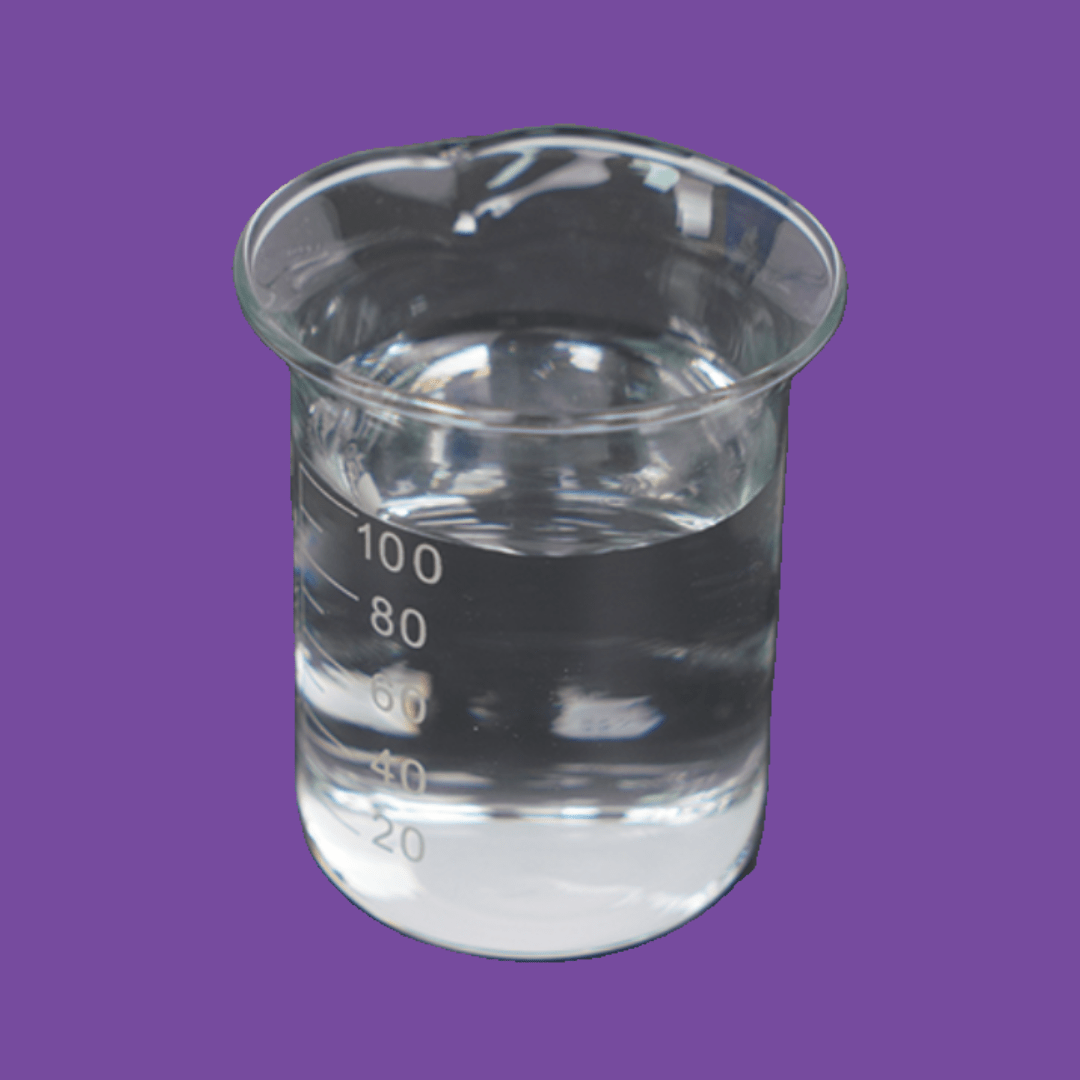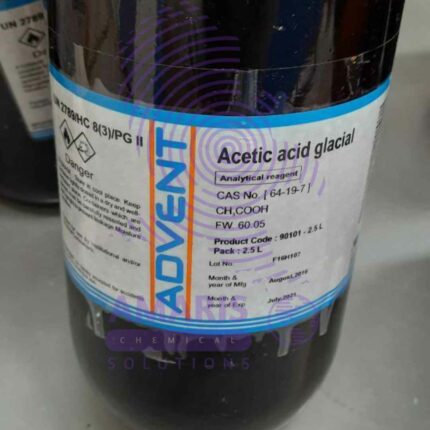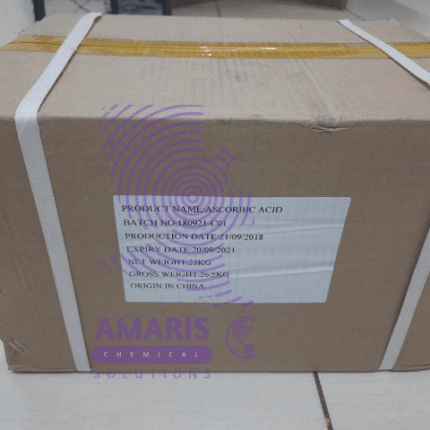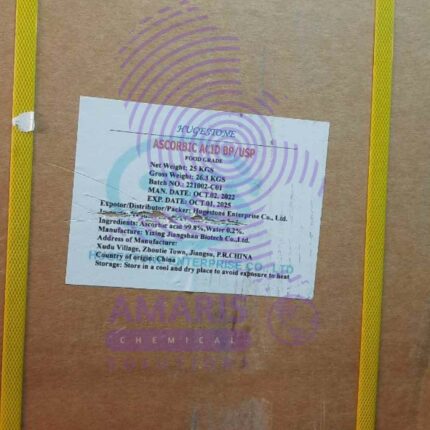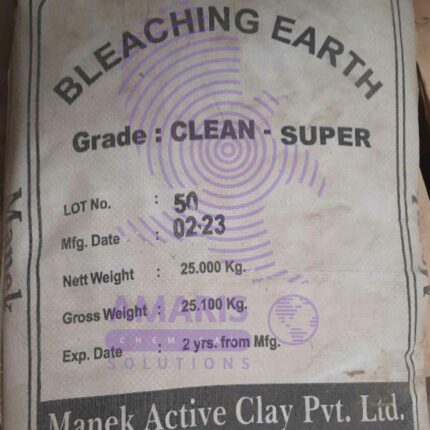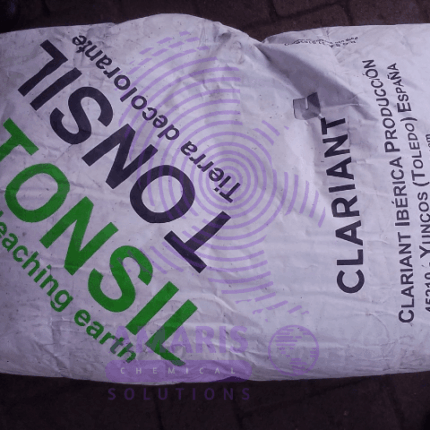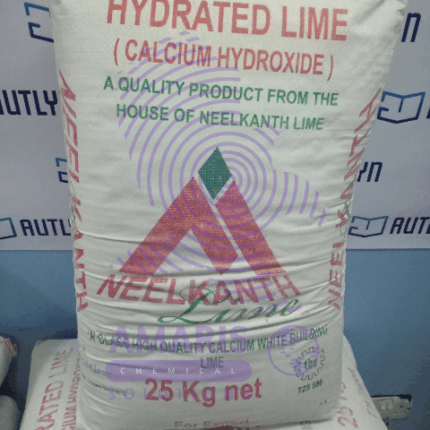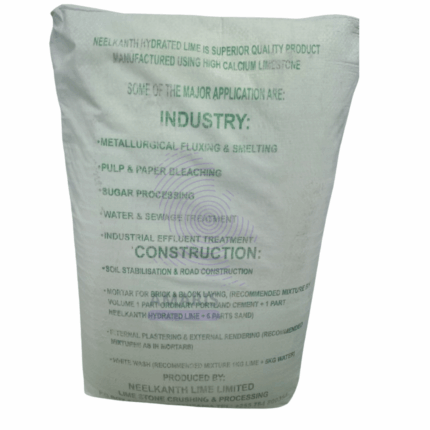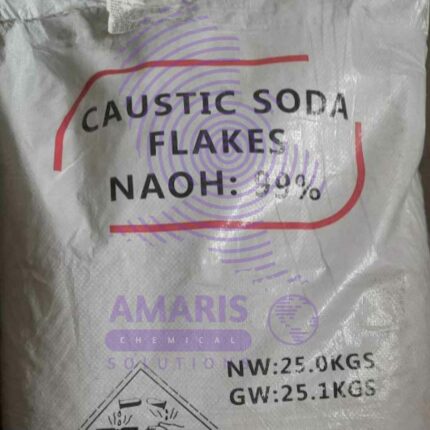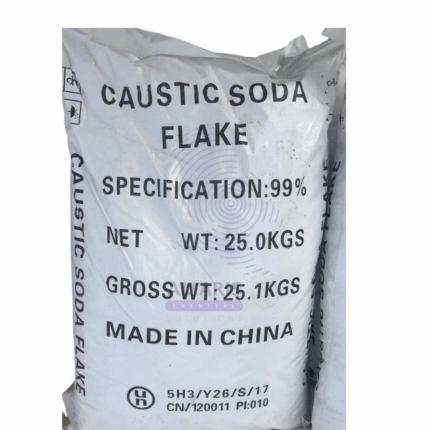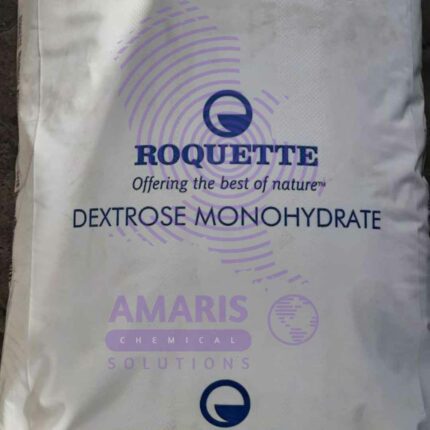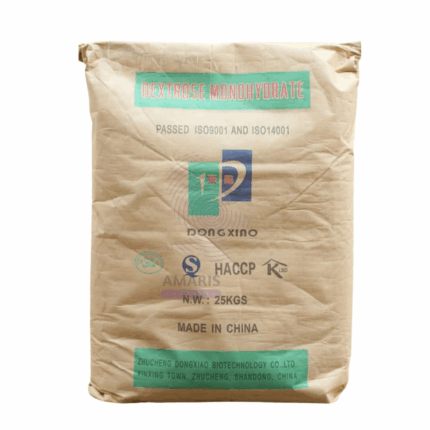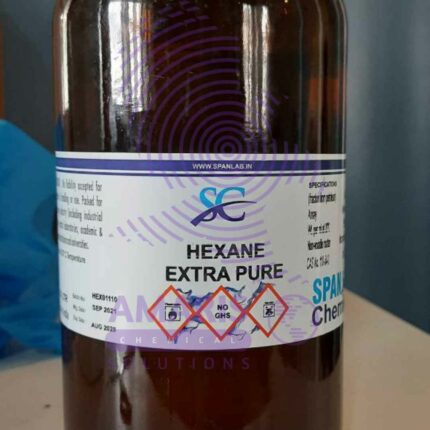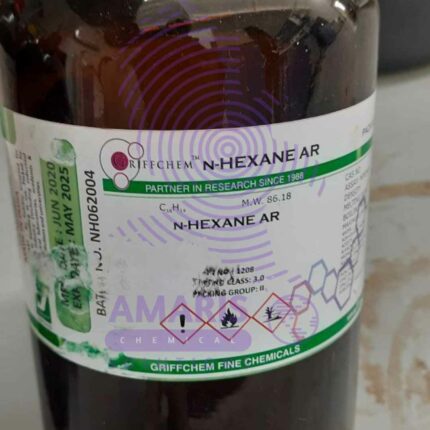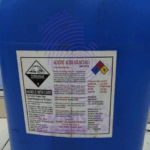
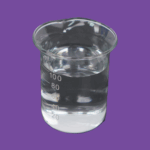
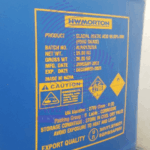
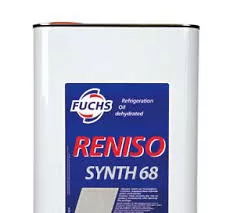
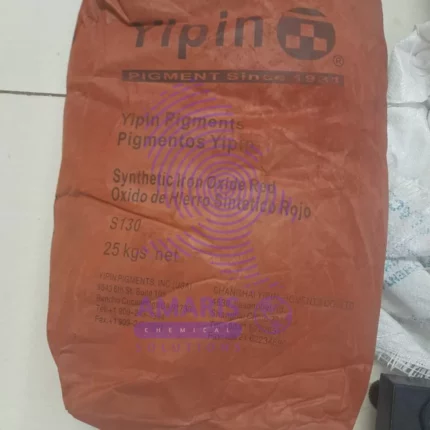
Acetic Acid Tech grade
$8,500.00 Original price was: $8,500.00.$8,400.00Current price is: $8,400.00.
Acetic acid Tech grade
Acetic acid is an organic acid with the chemical formula CH3COOH, also known as ethanoic acid. It is a colorless liquid with a pungent, sour taste and a distinctive vinegar-like odor. Acetic acid is an important industrial chemical used in the production of various products, including solvents, plastics, textiles, and food additives. It is also the main component of vinegar, which is commonly used as a condiment and preservative in cooking and food preparation.
Acetic acid Tech grade Uses
Production of vinyl acetate monomer (VAM):
Acetic acid is a major raw material used in the production of VAM, which is used to manufacture polyvinyl acetate (PVA) and other resins, coatings, adhesives, and textiles.
Manufacturing of cellulose acetate:
Acetic acid is used in the production of cellulose acetate, which is used in the manufacture of photographic film, cigarette filters, and other products.
Production of solvents:
Acetic acid is used to produce solvents, including ethyl acetate and butyl acetate, which are used in the production of coatings, adhesives, and inks.
Food industry:
Acetic acid is used as a preservative, flavor enhancer, and acidulant in the food industry. It is a key ingredient in vinegar, which is used in cooking, food preservation, and pickling.
Textile industry:
Acetic acid is used in the dyeing and finishing of textiles, as well as in the production of synthetic fibers such as polyester.
Pharmaceutical industry:
Acetic acid is used in the production of various pharmaceuticals, including aspirin, acetaminophen, and other drugs.
Personal care products:
Acetic acid is used in the production of personal care products such as hair dyes, shampoos, and skin care products.
1. Basic Identification Attributes
- Chemical Name: Ethanoic acid (IUPAC), Acetic acid (common)
- CAS Number: 64-19-7
- HS Code: 2915.21.00 (Acetic acid and its salts)
- Molecular Formula: C₂H₄O₂ (or CH₃COOH)
- Synonyms: Glacial acetic acid (when anhydrous), Methanecarboxylic acid, Vinegar acid
2. Physical & Chemical Properties
- Physical State: Clear, colorless liquid (technical grade may have slight impurities)
- Color & Odor: Colorless; pungent vinegar-like odor
- Boiling Point: 118°C | Melting Point: 16.6°C (solidifies at lower temps)
- Density: 1.049 g/cm³ (25°C)
- Solubility: Fully miscible in water, ethanol, ether; insoluble in hydrocarbons
- pH Level: ~2.4 (1M solution; strongly acidic)
- Vapor Pressure: 15.7 mmHg (25°C)
- Flash Point: 39°C (flammable above this temp)
- Autoignition Temperature: 485°C
- Viscosity: 1.22 mPa·s (25°C)
3. Safety & Hazard Attributes
- Hazard Class:
- Corrosive (Category 1B; severe skin/eye damage)
- Flammable Liquid (Category 3; above flash point)
- NFPA Ratings: Health-3, Flammability-2, Reactivity-0
- Exposure Limits:
- OSHA PEL: 10 ppm (25 mg/m³)
- ACGIH TLV: 10 ppm (STEL: 15 ppm)
- Reactivity:
- Reacts violently with oxidizers (e.g., chromic acid, peroxides).
- Corrodes metals (e.g., iron, aluminum) releasing hydrogen gas.
4. Storage & Handling Attributes
- Storage Conditions:
- Store in a cool, well-ventilated area (<40°C).
- Keep containers tightly closed (hygroscopic; absorbs moisture).
- Incompatible Materials:
- Bases (e.g., NaOH), oxidizers, metals (e.g., aluminum, zinc).
- Container Type:
- High-density polyethylene (HDPE), stainless steel, or glass.
- Shelf Life: Indefinite if stored properly (technical grade may degrade over years).
- Special Handling:
- PPE: Acid-resistant gloves (nitrile), goggles, face shield, and fume hood for concentrated solutions.
5. Regulatory & Compliance Attributes
- Regulatory Status:
- EPA: Listed under Toxic Substances Control Act (TSCA).
- REACH: Registered (no SVHC classification).
- OSHA: Regulated under 29 CFR 1910.1000 (air contaminants).
- DOT: UN 2789, Class 8 (Corrosive), PG II.
- Hazard Symbols:
- GHS Pictograms: Corrosion, Exclamation Mark(for lower concentrations).
- Transportation Restrictions:
- "CORROSIVE" label required; avoid air transport for concentrated solutions.
- Waste Disposal:
- Neutralize with alkali before disposal (RCRA hazardous waste code D002 for corrosivity).
6. Environmental & Health Impact
- Ecotoxicity:
- LC50 (fish): 50–100 mg/L (moderately toxic).
- Persistence:
- Readily biodegradable (half-life <5 days in water).
- Carcinogenicity:
- IARC: Not classified.
- ACGIH: A4 (not classifiable as human carcinogen).
- Biodegradability:
- Fully biodegradable via microbial action (converts to CO₂ and water)
Personal Protective Equipment (PPE)
- Eye/Face Protection:Chemical splash goggles + face shield
- Skin Protection:Acid-resistant gloves (nitrile, neoprene), apron, and boots
- Respiratory Protection:NIOSH-approved respirator (if ventilation is inadequate or vapor concentration exceeds limits)
- Clothing:Chemical-resistant coveralls (PVC or rubberized material)
Handling & Storage
- Ventilation:Use in well-ventilated areas or under fume hoods
- Containers:Store in HDPE or stainless steel (avoid aluminum, copper, brass)
- Temperature Control:Keep below 40°C (104°F) to reduce vapor pressure
- Avoid Contact With:
- Oxidizers(nitric acid, peroxides → violent reactions)
- Bases(sodium hydroxide → exothermic neutralization)
- Metals(aluminum, zinc → hydrogen gas release)
Spill & Leak Control
- Small Spills:Absorb with inert materials (vermiculite, sand, sodium bicarbonate)
- Large Spills:Contain with dikes, neutralize with sodium carbonate/bicarbonate, and dispose of properly
- Never use water directly(can spread acid)
Inhalation (Vapors/Mists)
- Symptoms:Coughing, shortness of breath, throat irritation
- Action:
- Move to fresh air immediately
- Administer oxygenif breathing is difficult
- Seek medical attention if symptoms persist
Skin Contact
- Symptoms:Redness, burns, severe irritation
- Action:
- Remove contaminated clothing
- Rinse with copious amounts of water for 15+ minutes
- Apply neutralizing solution(if available, e.g., sodium bicarbonate)
- Seek medical help for severe burns
Eye Contact
- Symptoms:Severe pain, redness, blurred vision
- Action:
- Immediately flush eyes with water for at least 20 minutes(lift eyelids)
- Do NOTrub eyes
- Seek emergency medical attention
Ingestion
- Symptoms:Burns in mouth/throat, nausea, vomiting
- Action:
- Do NOT induce vomiting(risk of perforation)
- Rinse mouth with water
- Give milk or water to dilute(if conscious)
- Seek immediate medical help
Fire Hazards
- Flammability:Combustible liquid (Flash point: 39°C / 102°F)
- Vapor Explosion Risk:Forms explosive mixtures with air (LEL: 4%, UEL: 19.9%)
- Decomposition Products:Irritating fumes (formic acid, CO, CO₂)
Extinguishing Methods
✅ Recommended:
- Alcohol-resistant foam
- CO₂ extinguishers
- Dry chemical powder (Class B fires)
❌ Avoid:
- Water jets(can spread fire)
- Direct water on concentrated acid(risk of splashing)
Firefighting Procedures
- Wear full protective gear + SCBA(self-contained breathing apparatus)
- Cool nearby containers with water sprayto prevent rupture
- Stop leak if safe to do so
- Evacuate area if fire becomes uncontrollable
Emergency & Regulatory Information
- NFPA Rating:Health 3, Flammability 2, Reactivity 1
- GHS Hazard Statements:
- H226(Flammable liquid/vapor)
- H314(Causes severe skin burns/eye damage)
- H335(May cause respiratory irritation)
- OSHA Permissible Exposure Limit (PEL):10 ppm (TWA)
- Emergency Contacts:Poison Control, local fire department


 Emollients
Emollients Humectants
Humectants UV Filters
UV Filters Surfactants (cosmetic)
Surfactants (cosmetic) Preservatives (cosmetic)
Preservatives (cosmetic) Fragrances and Essential Oils
Fragrances and Essential Oils Antioxidants (cosmetics)
Antioxidants (cosmetics)
 Solvents (lab)
Solvents (lab) Chromatography Chemicals
Chromatography Chemicals Microbiology and Cell Culture Reagents
Microbiology and Cell Culture Reagents Biochemical Reagents
Biochemical Reagents Inorganic and Organic Standards
Inorganic and Organic Standards LABORATORY EQUIPMENT & APPARATUS
LABORATORY EQUIPMENT & APPARATUS Spectroscopy Reagents
Spectroscopy Reagents Molecular Biology Reagents
Molecular Biology Reagents
 Precious Metal Extraction Agents
Precious Metal Extraction Agents
 Plasticizers
Plasticizers Polymerization Initiators
Polymerization Initiators Stabilizers
Stabilizers Monomers
Monomers Fillers and Reinforcements
Fillers and Reinforcements Antioxidants (plastics)
Antioxidants (plastics) Colorants (plastic pigments,Dyes)
Colorants (plastic pigments,Dyes)
 Fertilizers
Fertilizers Plant Growth Regulators
Plant Growth Regulators Soil Conditioners
Soil Conditioners Animal Feed Additives
Animal Feed Additives Biostimulants
Biostimulants
 Dough Conditioners
Dough Conditioners Flour Treatments
Flour Treatments Fat Replacers
Fat Replacers Preservatives (baking)
Preservatives (baking)
 Surfactants (cleaning)
Surfactants (cleaning) Builders
Builders Bleaching Agents
Bleaching Agents Enzymes
Enzymes Solvents (cleaning)
Solvents (cleaning) Fragrances
Fragrances Disinfectant
Disinfectant Metal cleaning
Metal cleaning
 Binders/Resins
Binders/Resins Pigments
Pigments Solvents (paint)
Solvents (paint) Additives
Additives Driers
Driers Anti-Corrosion Agents
Anti-Corrosion Agents Specialty Coatings
Specialty Coatings Functional Coatings
Functional Coatings Application-Specific Coatings
Application-Specific Coatings
 Sealants and Adhesives
Sealants and Adhesives
 Biodegradable Surfactants
Biodegradable Surfactants Bio-based Solvents
Bio-based Solvents Renewable Polymers
Renewable Polymers Carbon Capture Chemicals
Carbon Capture Chemicals Wastewater Treatment Chemicals
Wastewater Treatment Chemicals
 Preservatives (food)
Preservatives (food) Flavor Enhancers
Flavor Enhancers Acidulants
Acidulants Sweeteners
Sweeteners Emulsifiers
Emulsifiers Antioxidants (food)
Antioxidants (food) Colorants (food)
Colorants (food) Nutrient Supplements
Nutrient Supplements Nutraceutical Ingredients
Nutraceutical Ingredients
 Fresh Herbs
Fresh Herbs Whole Spices
Whole Spices Ground Spices
Ground Spices Spice Blends
Spice Blends
 Surfactants(oil)
Surfactants(oil)
 Antibiotics
Antibiotics Active Pharmaceutical Ingredients
Active Pharmaceutical Ingredients Excipients
Excipients Vaccine Adjuvants
Vaccine Adjuvants Nutraceutical Ingredients
Nutraceutical Ingredients Solvents (pharmaceutical)
Solvents (pharmaceutical)
 Automotive chemicals
Automotive chemicals Pyrotechnic Chemicals
Pyrotechnic Chemicals


 Vulcanizing Agents
Vulcanizing Agents Accelerators & Retarders
Accelerators & Retarders Antidegradants
Antidegradants Reinforcing Agents
Reinforcing Agents Plasticizers & Softeners
Plasticizers & Softeners Fillers & Extenders
Fillers & Extenders Blowing Agents
Blowing Agents Adhesion Promoters
Adhesion Promoters
